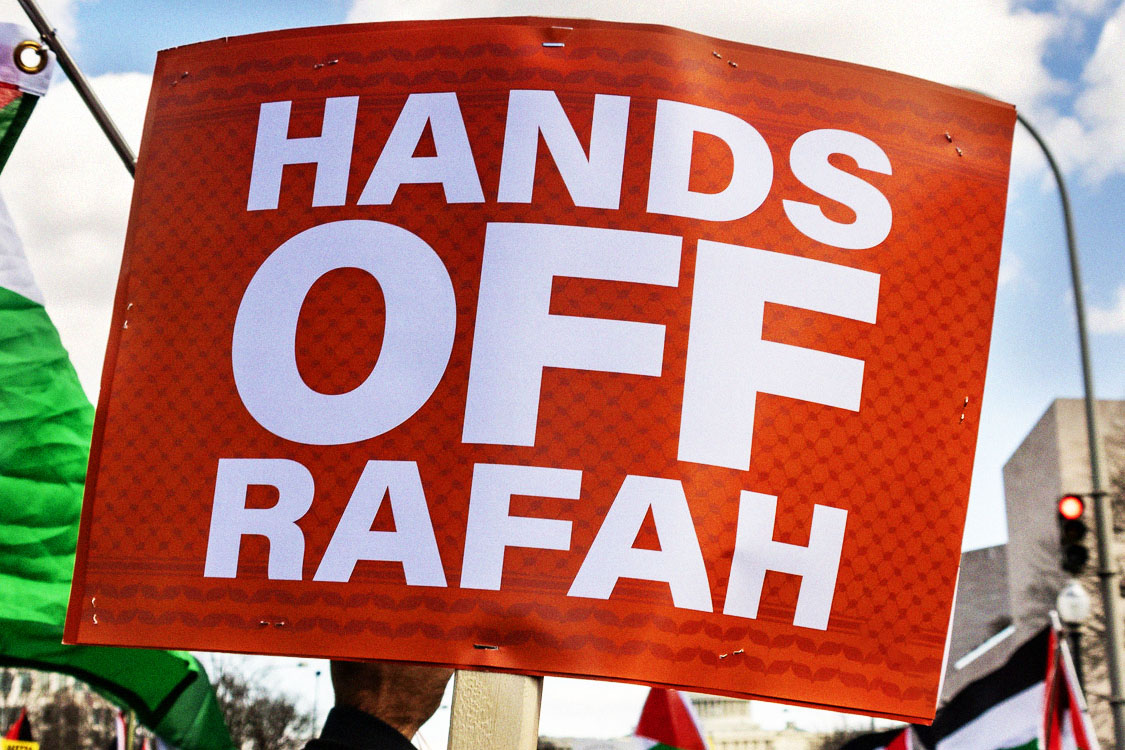
The long-planned attack on Rafah has begun. On Monday 6 May, the IDF launched airstrikes on the city and issued calls for the evacuation of around 100,000 Palestinians from its eastern neighbourhoods to the so-called ‘humanitarian zones’ of al-Mawasi towards the coast, and an area west of Khan Younis.
Civilians who have been forced to evacuate Gaza City, then Khan Younis, are now once again desperately fleeing from Rafah. On Tuesday, a tank brigade seized the Gaza side of the Rafah crossing into Egypt. So far, the operation has been ‘limited’, with IDF forces poised on the brink of all-out invasion. Why the delay?
Netanyahu is walking a tightrope. He is balancing his own needs (which means appeasing his far-right partners in government), with the pressure he is under from the Biden Administration, which is concerned that a full-on attack on Rafah could have undesired effects from the point of view of US imperialist interests.
An onslaught that risks massively increasing the number of civilian deaths in Gaza would ratchet up the pressure from the masses on, for example, the regimes in Jordan and Egypt. This could open up crises and revolutionary upheavals that could even spell their downfall, risking a domino effect throughout the region, threatening US geopolitical interests and the fragile world economy.
It would also further radicalise the already enraged youth of the United States: a generation whose coast-to-coast encampment protests have provided a lead to the youth of the world. The country is deeply divided. In the final analysis, this is a reflection of widening class divisions, and above all the youth is radicalising in opposition to the genocidal war waged by Israel with the support of the Biden Administration. People are asking themselves: why is there always money for war and destruction, but not for jobs, social services, and decent infrastructure? Why does ‘law and order’ only seem to apply when police are silencing protestors with batons and tear gas, but not when allies of the US commit war crimes?
While the US ruling class has, so far, backed Netanyahu’s bloody war, the youth of America have been on the other side of the barricade. They are a sensitive barometer of the wider mood in society, and their courageous stand on Gaza is getting a wide echo among US workers. Already, the powerful UAW union, which organises workers on US campuses, has offered solidarity and pledged action. The movement of the youth is a harbinger of a much wider movement of the US working class. This is a significant factor in the thinking of the US ruling class.
Netanyahu defies his imperialist backers

These pressures explain the delay in the attack on Rafah. Netanyahu has been consistent in his declarations that the attack will eventually take place. The problem he has come up against has nothing to do with any humanitarian concerns on his part. Rather, the issue is: how to go ahead with the attack, while maintaining US support?
An article in the Financial Times points out:
“The decision [to commence the attack on Rafah] marks one of the biggest gambles of Netanyahu’s long career. Halting the fighting to release the hostages would leave Hamas jubilant — and many of its leaders, including Yahya Sinwar, at large. Turning down the deal to push further into Rafah would risk a fundamental breach with the US and leave the fate of the hostages uncertain.
“It has made the fate of the 132 hostages still held by Hamas one of the thorniest dilemmas of Netanyahu’s premiership, one in which his political career and Israel’s security are inextricably intertwined.”
The Israeli government is coming into conflict with its main imperialist backer, the United States. They have publicly stated that they are very unhappy with the way US negotiators have gone about the talks with Hamas. The US has, in turn, (via ‘anonymous officials’) replied that “Netanyahu and the war cabinet have not appeared to approach the latest negotiations in good faith.”
Biden has also repeatedly stated his administration “will not support a major military operation absent an effective plan to make sure that civilians are not harmed” [our emphasis]. Of course, such a guarantee is impossible to provide when we speak of a full-blown attack in a densely-populated city full of men, women, children and the elderly.
According to an anonymous US official, the Biden Administration went as far as pausing weapons shipments to Israel last week. This move, which provoked outrage from the Israeli government and some of the most hardline Zionists in Washington, was a stark reminder to Netanyahu about who funds and facilitates his war, and what would happen if the supply of arms was cut off.
The threat of holding back weapons shipments to Israel should it launch an all-out offensive in Rafah is also a clear indication of the anti-war mood in the United States that the ruling class is having to manoeuvre around.
Netanyahu’s game
There is also division within Israel over the question of the hostages, which the Hamas leaders have tried to exploit. A big majority in Israel still backs the IDF’s attack on Gaza, but a narrow majority (56 percent) think that a hostage deal should be prioritised over a military offensive on Rafah.
It is abundantly clear, however, that Netanyahu, and especially his far-right friends in government, have no real concern for the hostages. The far-right see the present situation as an opportunity to push forward with their agenda of taking the whole of historical Palestine and creating a Greater Israel. By allowing these far-right to determine the agenda, Netanyahu is defying the demands of his imperialist benefactors, and risking a conflagration spreading across the whole of the Middle East.
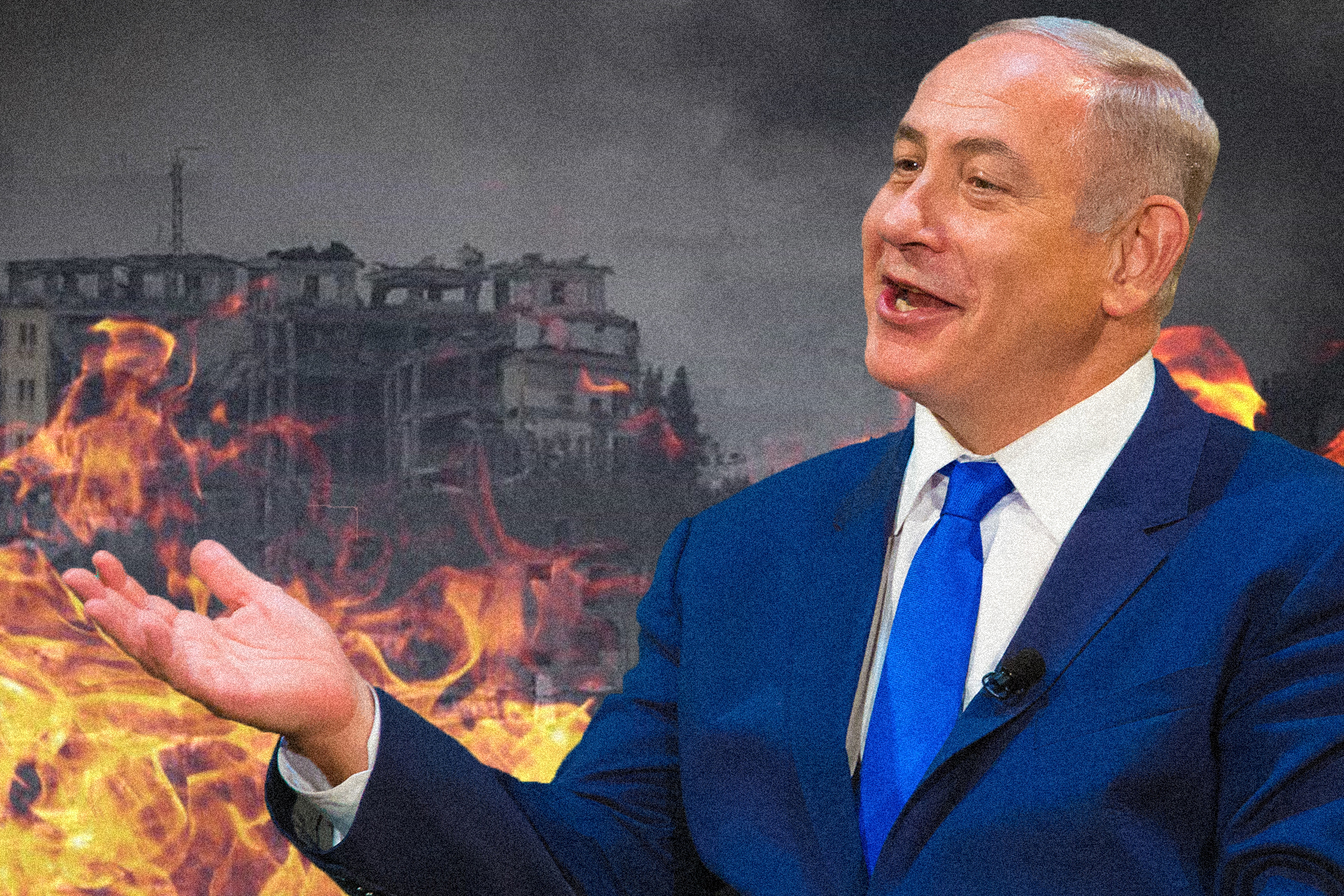
Hours before the commencement of Israeli military operations in Gaza, Hamas announced it was prepared to accept a three-phase truce, spread over three successive six-week periods, involving the gradual release of hostages. But the sticking point remains the same as in all previous attempts to reach a deal.
Hamas wants solid guarantees from the United States and other powers that the truce would lead to a permanent ceasefire. The Netanyahu government keeps reiterating that it would only consider a temporary ceasefire to recover Israeli hostages, before resuming the war to achieve its goal of totally destroying Hamas.
This approach is determined by Netanyahu’s own domestic considerations. He can only hold his coalition government together by refusing to compromise with Hamas. A long, drawn-out ceasefire would make it difficult for his government to recommence the war after the three phases are completed.
The far-right Zionist extremists in his coalition have made it clear that they would bring his government down if he accepts such a ceasefire. That would mean the end of Netanyahu politically, and would also expose him further in ongoing court cases for corruption.
With both his career and potentially his personal freedom on the line, his back is up against the wall. This is why he has defiantly stated that Israel would go it alone and attack Rafah, even at the cost of the international isolation of the country.
Prospect of horror in Rafah
Should a full-blown invasion commence, the results would be apocalyptic. It has been reported that Israel has ordered 40,000 tents for the two ‘humanitarian’ areas, which could house up to 400,000 people. But there are at least 1.5 million people huddled in and around Rafah. With the border to Egypt in Israel’s grip, many Palestinian families are asking: “where are we supposed to go?”
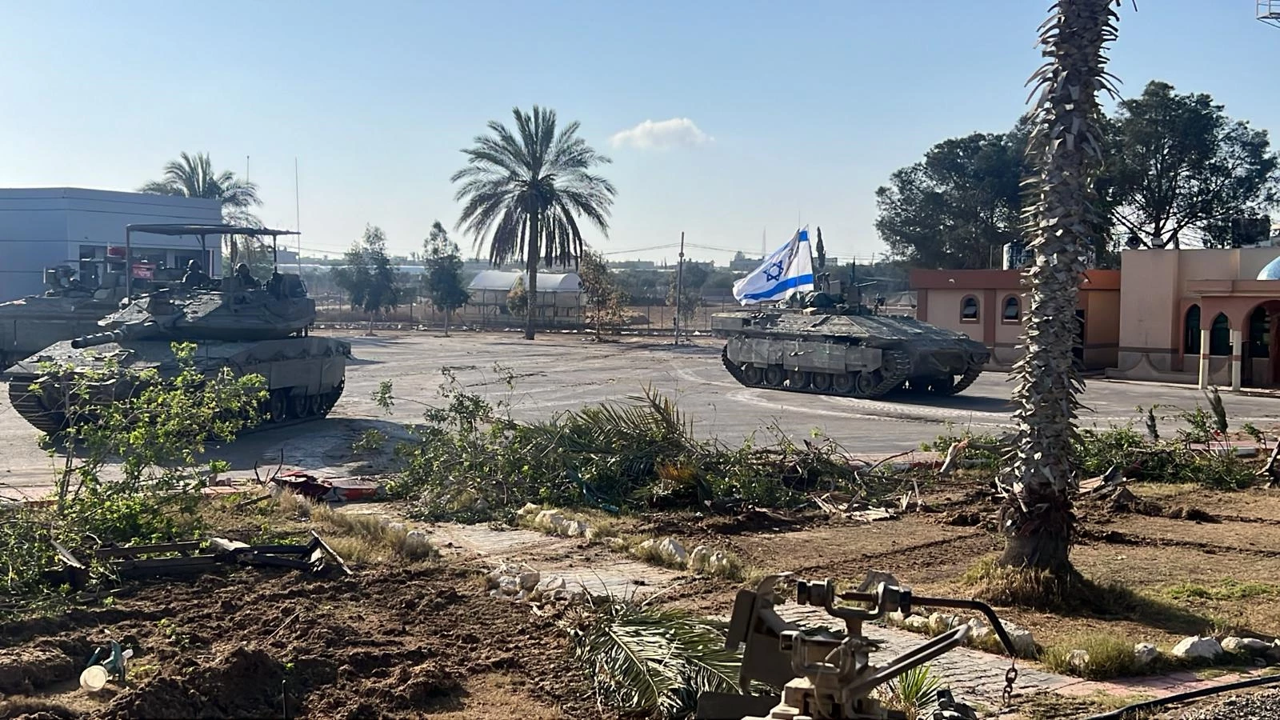
Rafah was also the main entry point for aid trucks into Gaza. This is significant because Israel has used its control of other border crossings to severely restrict the delivery of aid, effectively besieging the population. Now that it has direct control over the Rafah crossing, Israel can squeeze the Palestinians of Gaza even further.
A spokesman for the Gaza Border Crossing Authority, Hisham Edwan, has stated that this action “has sentenced the residents of the [Gaza] Strip to death”. This death sentence is already being carried out, from the commencement of bombardment, to the rising threat of famine. 1.1 million people – half of Gaza’s pre-war population – are living through “catastrophic food insecurity”, according to the Integrated Food-Security Phase Classification (IPC).
The advance into Rafah is expected to take place in stages. For now, the evacuation order applies only to the east of the city. IDF officials have, however, stated that they are going after the six remaining battalions of Hamas fighters they claim are hiding in the south, north, west and east of Rafah. Destroying them would involve a systematic attack on one neighbourhood after another: in other words, the all-out assault that Biden has been hoping to avoid.
It goes without saying that the real aim of Netanyahu is not merely the destruction of Hamas, as he has been claiming since day one. The IDF has been systematically reducing everything of value to the Palestinians in Gaza to rubble – housing, schools, universities, hospitals, heritage, water and energy supplies, and any existing infrastructure.
The IDF has issued warnings that anyone going anywhere near the eastern and southern border fences, and anyone remaining within the designated evacuation zone, would be putting themselves in danger. It is a clear warning that they consider everyone in these areas to be a legitimate target.
The number of people killed so far by the Israeli military is at least 35,000. If the attack proceeds across the whole of Rafah, we can expect this to significantly increase, unless the attack is stopped.
Mass opposition
The United States government is experiencing mass opposition to its policy over Gaza, in particular from the courageous movement of the university students, which has faced brutal repression from the state forces and Zionist mobs. We have stated many times in our previous articles that the situation in Gaza is acting as a catalyst in the process of mass radicalisation of workers and youth around the world.
Now, a movement that began at Columbia University in New York, spreading from there across the whole of the US, has now spilled over the border into Canada, and across oceans, with encampments cropping up in the UK, France, Switzerland, the Spanish State, Australia, Japan and many other places.
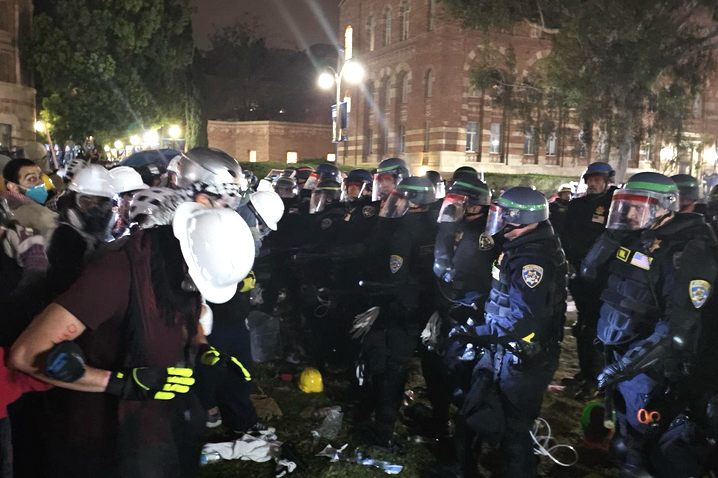
We have also begun to see students take solidarity action in the Middle East and North Africa: in Cairo, Beirut, Kuwait and elsewhere, protesting against regimes that pay lip service to supporting Palestine, while taking no action. In all, this wave of protest has reached almost 100 campuses globally.
In the US, the movement has begun to spread to the high schools, as seen in Boston, where students from around 12 high schools, inspired by the university students, have been joining the protests.
It is evident to this generation of youth that UN resolutions have no effect on Israel’s actions, and that decisions of the International Court of Justice are mere gestures. They understand that, when their governments express mealy-mouthed concern for the Palestinian people being bombed in Gaza, they are merely putting on a show. They judge their ruling not by what they say, but by what they do.
And their actions speak very clearly. They have been backing Netanyahu’s war machine with financial aid, and with all the weapons he needs. That is why the protest movement is so strong in the United States. The students are fighting the US government as a concrete means of helping the Palestinian people.
They are demanding that all economic and financial connections between US universities and companies, and Israel be made public. They are demanding that all such connections cease and that pressure be brought on the Israeli government to end its genocidal war.
Escalate the movement!
The youth in all countries correctly understand the need for concrete action. They have been on many marches and protests, but the war on Gaza continues. Now we are facing the real threat of the initial attack on Rafah becoming a generalised one. The Israeli ruling class is ruthlessly proceeding in defence of its own interests. It will not be stopped by a limited student movement. A political programme and a plan of action is therefore needed in order to escalate the movement.
Where an encampment is set up, there must be an open debate among all those participating about the programme of demands, and how to concretely advance.
At each encampment, teams of students should be organised to go into all the faculties with leaflets, posters, and speakers, explaining what the movement is about and calling on students to join the movement.
Delegations should be sent to those campuses where no movement has yet developed. All the reports coming in show how quickly a mobilisation can take place on a campus, even when they start with very small numbers. This should be built on.
The university students should also organise teams to discuss with academic and non-academic staff on the campuses. In many places, there has been a great response from professors and lecturers, who have come out to defend the students against police repression. Teams should also go to all the nearby high schools, talk to the students, and invite them to participate in the protests, and to set up action committees to organise assemblies in their schools.
The main emphasis should be to make the movement on the campuses into a mighty mass movement of youth. This would send a clear message to the US ruling class that, if they continue to back Netanyahu, they will be facing a huge backlash on the home front.
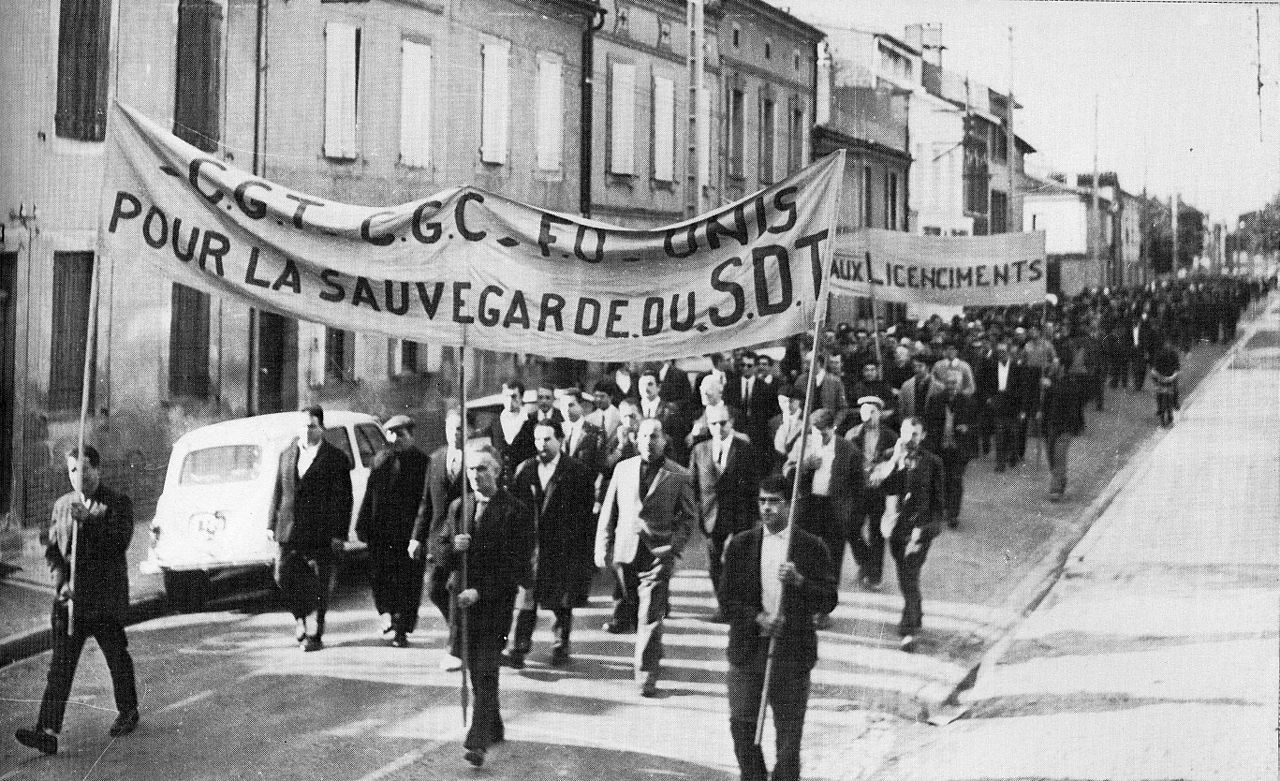
The movement is on the right path. The mobilisation of students; rallies and marches; encampments, and so on, are all excellent ways of putting pressure on the authorities. And there is huge potential for involving ever wider layers of students in one campus after another, in one country after another. But even this is not enough. Students do not have the leverage to paralyse society, in order to frustrate the ruling class’ plans. Therefore, the movement must connect with and involve wider layers of workers.
History shows that a youth movement of such proportions has the potential to spread to the working class as a whole. The student radicalisation of the 1960s culminated in the famous 1968 movement, which saw the massive involvement of workers.
In France, we saw the powerful May ‘68 general strike and millions of workers occupying the factories. This started as a student movement, which then became the spark that ignited the class struggle on a grand scale. A similar process was seen in Italy, Mexico, Pakistan and many other countries in 1968-69. Such a scenario is not excluded today.
Under the present conditions of crisis affecting the whole system, this movement has the potential to spread well beyond the campuses and across national borders. That is why the students must give structure to their movement, discuss and vote on resolutions that are then taken to all the workplaces, trade unions and working-class neighbourhoods.
In some instances, we have seen workers taking action in solidarity with Palestine (including dockers tasked with shipping weapons, and tech workers developing computer systems for Israel’s defence capabilities). By reaching such layers, the movement could deal a material blow to the Israeli war machine.
The US authorities were hoping to stop the movement by using brutal repressive measures. But this only served to spread it further. Now that an attack on Rafah has begun, there is no telling how far the struggle could advance.
The concerns of US imperialism about an attack on Rafah are partly determined by the potential for such a movement to erupt. Developing this struggle is a concrete way of showing the ruling class that, if they continue to support the genocidal war in Gaza, then they will be facing revolutionary upheaval on the home front. Faced with such a threat, they could be forced to back off.
Taking the fight to the bosses and bourgeois politicians at home is the best way of helping the Palestinian people in their hour of need. The imperialists must be brought to a situation where they have more to lose than they have to gain from continuing their support for the war.

